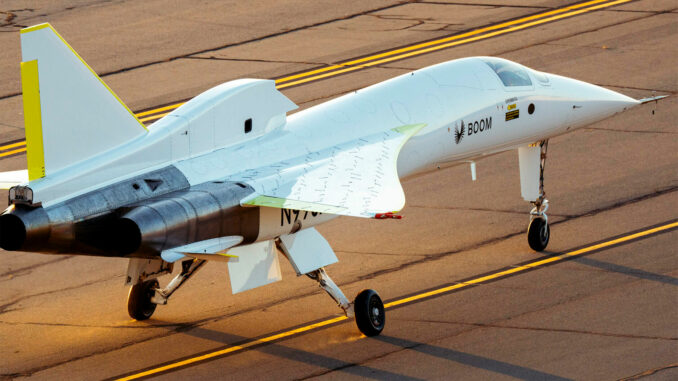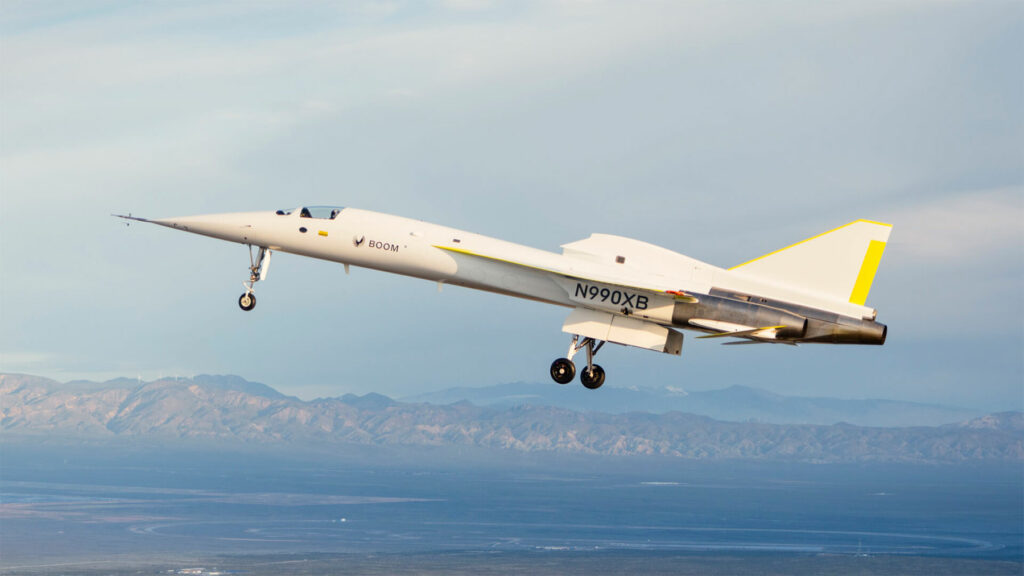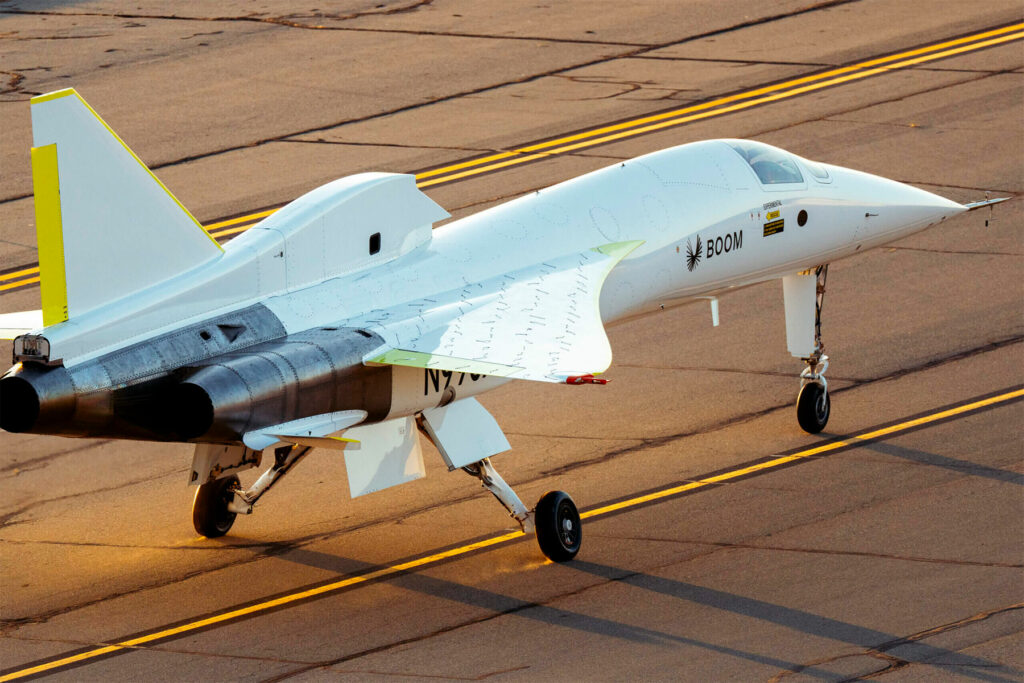
Boom Supersonic advances towards Mach 1 with its XB-1 aircraft, reaching a record speed of 1,012 km/h on its seventh test flight.
Boom Supersonic’s XB-1 supersonic demonstrator reached a record speed of 1,012 km/h (Mach 0.82) during a 55-minute test flight on November 5, 2024. This was the seventh of ten tests planned before the attempt to break the sound barrier. In addition to speed, structural and pressurization tests validated the aircraft’s ability to reach 9,144 meters altitude, the altitude required for supersonic flight. This project forms the basis for the development of Overture, a future supersonic airliner designed to revolutionize air transport.

XB-1: a supersonic demonstrator on the move
The XB-1, developed by Boom Supersonic, represents a major step forward in supersonic aircraft research. On its seventh test flight, the aircraft reached a speed of 1,012 km/h (Mach 0.82) at an altitude of 7,015 meters, surpassing its previous record of Mach 0.69.
These tests are part of a rigorous program to validate the aircraft’s aerodynamic performance and piloting qualities before attempting to break the sound barrier at Mach 1 (1,235 km/h at 15°C). The Boom Supersonic team is progressing in stages to guarantee safety and reliability, making subsonic flights before moving on to supersonic.
Test duration: The November 5 flight lasted 55 minutes, demonstrating the extended flight capacity required for future tests.
Validation of structural and pressurization performance
The tests carried out included tests on the aircraft‘s vibrations and structure, known as flutter tests. Carried out at speeds of Mach 0.7, 0.75 and 0.8, these tests ensure that no undesirable interaction occurs between the airflow and the aircraft structure, thus guaranteeing its stability.
The team also carried out a maximum pressurization test to validate cockpit operation at high altitude. These tests confirmed that the aircraft can reach an altitude of 9,144 meters, a crucial step for supersonic testing.
Technical significance: These validations guarantee structural safety and enable flight conditions to be progressively extended, an essential method for avoiding failures linked to high-speed fluid dynamics.
A step towards commercial supersonics
The XB-1 is an essential demonstrator for the development of the Overture, a supersonic airliner designed to carry passengers at speeds in excess of Mach 1. This project aims to drastically reduce journey times: a New York-London flight, usually 7 hours, could be reduced to 3.5 hours.
Economic efficiency: The aim is to offer a supersonic aircraft that is both fast and economically viable, thanks in particular to lightweight materials and optimized engines. Boom Supersonic aims to win over airlines by offering an efficient alternative to traditional subsonic aircraft.

Economic and scientific consequences
The Overture project could transform air transport by introducing affordable commercial supersonic flight. However, these advances raise economic and environmental challenges. Development costs are estimated at several billion euros, with a targeted market for premium and business classes.
On the scientific front, the data collected on the XB-1 could be used in other fields, such as defense and space research, to improve knowledge of supersonic flows and high-altitude pressurization.
Environmental impact: Supersonic flights consume on average 25% to 30% more fuel per kilometer than subsonic aircraft. Boom Supersonic strives to develop more sustainable solutions, such as the use of Sustainable Aviation Fuels (SAF).
With the XB-1, Boom Supersonic is showing that commercial supersonic flight is no longer a technological utopia. The success of current tests is paving the way for faster, potentially revolutionary routes, while highlighting the financial and environmental challenges that will have to be overcome for their widespread adoption.
War Wings Daily is an independant magazine.